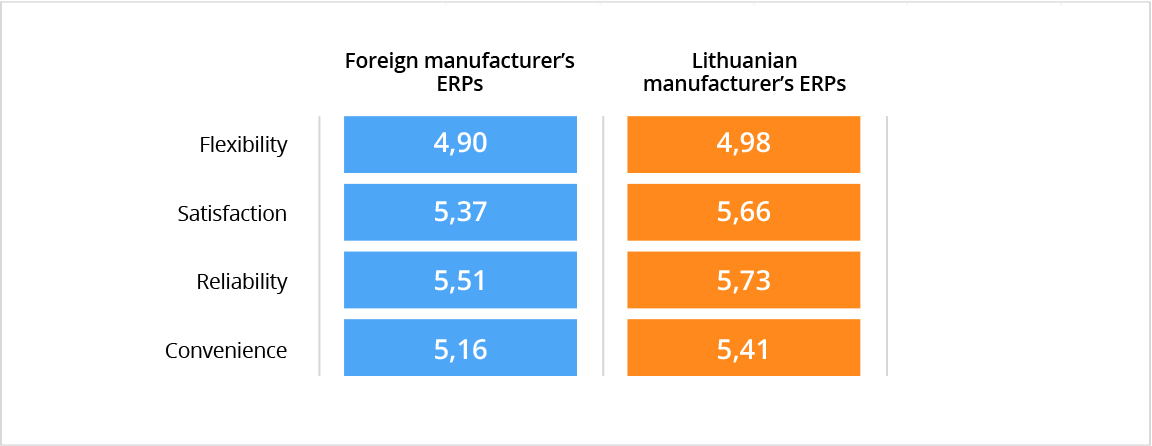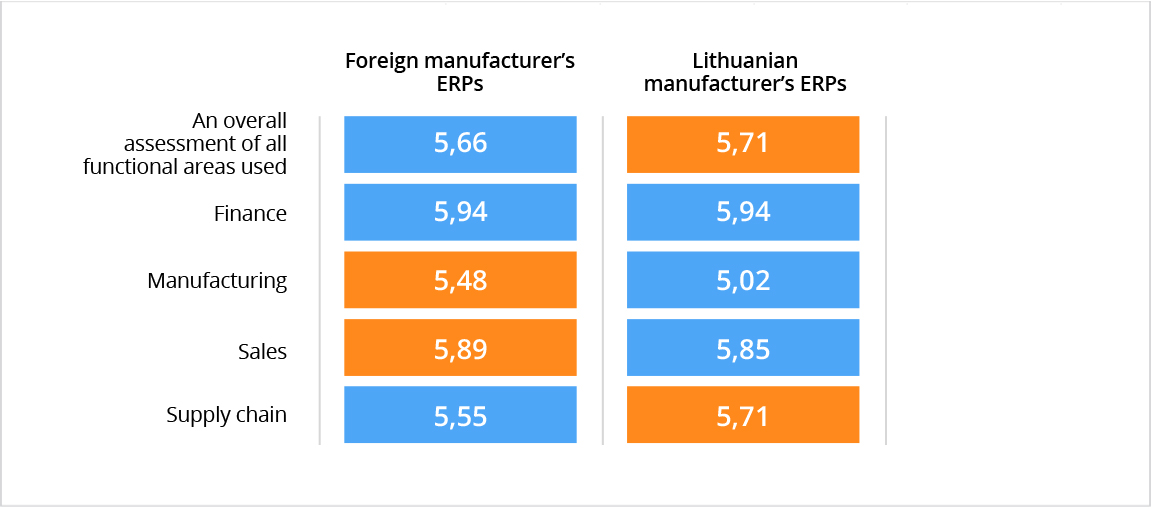One of the questions that Lithuanian companies ask when choosing a business management system (ERP) is whether to choose a Lithuanian solution or a solution from a foreign supplier. This question is common when the company does not intend to make very large investments or does not intend to implement the system in more complex business processes, e.g., when implementing accounting, sales, purchasing management core functions.
In Lithuania, the international solution Microsoft Dynamics NAV is the leading solution in terms of market share, but in terms of market share and system evaluation, the Lithuanian solution Rivilė is in the leading category. Lithuanian companies are more likely to consider Lithuanian ERP systems instead of choosing one. Rivilė is the first system considered (27%), Microsoft Dynamics NAV is the second (25%), Labbis is the third (21%), Agnum is the fourth (14%), and Euro Skaita (12%) and Pragma (12%) share the fifth and the sixth places.
Lithuanian companies are more likely to consider Lithuanian ERP systems instead of choosing one.
The most commonly preferred and used system is Microsoft Dynamics NAV (18%) (the second most popular system in the list of preferences), followed by Rivilė (11%) (the first most popular system in the list of preferences), and the third and fourth places are shared by Euro Skaita (8%) (the fifth most popular system in the list of preferences), and Microsoft Dynamics AX (8%) (the eighth most popular in the list of preferences).

This was demonstrated in our 2016 study on financial accounting and business management systems used in Lithuania. Lithuanian ERP systems are more prevalent in Lithuania (59%). Lithuanian users also have a higher perception and satisfaction with the ERPs of Lithuanian manufacturers. The usability of Lithuanian solutions is particularly appreciated.

When comparing the functional area ratings, Lithuanian products score higher on supply chain management than foreign products. However, users are more satisfied with the functionality of production management in the systems of foreign manufacturers (the chart below shows an incomplete assessment of the functional areas).

